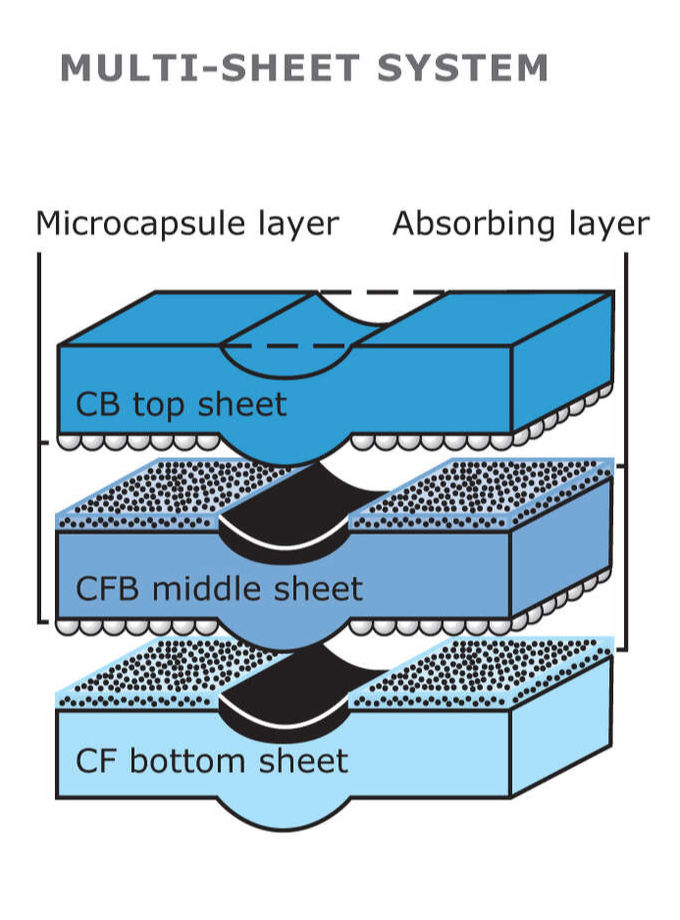CARBONLESS TECHNOLOGY
With carbonless paper, the copy is produced by a chemical reaction between two different coatings, which are generally applied to the front and back of a base paper. This color reaction is caused by pressure (typewriter, dot-matrix printer, or writing instrument).
The first and uppermost layer (CB = Coated Back) consists of microcapsules containing a colorless but color-producing substance. When mechanical pressure is exerted on these capsules, they burst and release the color-producing substance, which is then absorbed by the second layer (CF = Coated Front). This CF layer consists of a reactive substance which combines with the color-releasing substance to produce the copy.
In the case of form sets with more than two sheets, another type of sheet is required as a central page which receives the copy and also passes it on (CFB = Coated Front and Back).

The microcapsules burst under the pressure of writing so that they release the reaction fluid onto the next sheet. An ink reaction creates the copy on the next sheet´s ink-absorbing layer.
For some applications we can supply a paper which carries the color-producing substance (microcapsules) and the color-receiver in a single layer on the front of the paper. The reaction then takes place in this single layer when pressure is applied by writing. For this reason, Selfcontained SC can be combined with an uncoated standard paper as the upper top page.
If more than one copy is required, then SC/CB paper can be used. Selfcontained SC/CB has another color producing layer of ink-releasing microcapsules on the back, which produces copies on subsequent central and back pages.

The microcapsules contained in the SC layer burst under the pressure of writing, so that they release reaction fluid onto the surrounding pigments. The color reaction takes place within the same layer.

On the front, this functions in the same way as SC. The extra layer of capsules on the back releases reaction fluid onto the next middle sheet or bottom sheet.

